solar shingle
Solar shingles are rapidly gaining popularity as a sustainable and cost-effective solution for generating clean energy in residential and commercial buildings. These innovative roof tiles are designed to seamlessly integrate with traditional roofing materials, making them an aesthetically pleasing and practical alternative to bulky solar panels.
Solar shingles represent a promising and innovative solution for generating clean energy in a way that is practical, efficient, and sustainable. As more homeowners and businesses look for ways to reduce their carbon footprint and save money on energy costs, solar shingles are sure to become an increasingly popular choice.
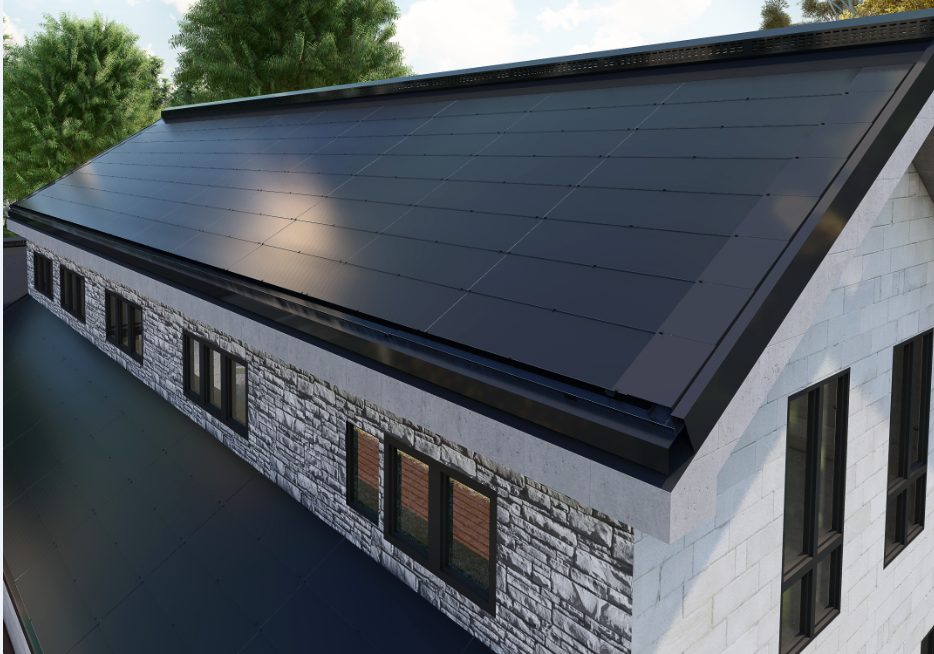
Solar shingles are rapidly gaining popularity as a sustainable and cost-effective solution for generating clean energy in residential and commercial buildings. These innovative roof tiles are designed to seamlessly integrate with traditional roofing materials, making them an aesthetically pleasing and practical alternative to bulky solar panels.
Solar shingles represent a promising and innovative solution for generating clean energy in a way that is practical, efficient, and sustainable. As more homeowners and businesses look for ways to reduce their carbon footprint and save money on energy costs, solar shingles are sure to become an increasingly popular choice.
A solar shingle is a type of roofing material that is designed to generate electricity from the sun's energy. Solar shingles are typically made of a thin layer of photovoltaic cells, which are capable of converting sunlight into electricity. They are designed to blend in with traditional roofing materials, such as asphalt or slate, and can be installed on both new and existing roofs.
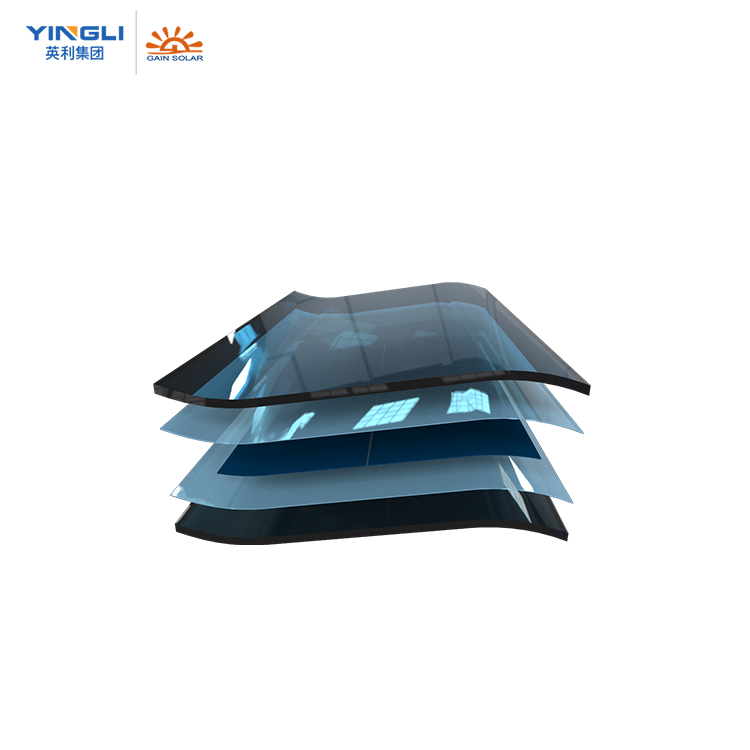
Solar shingles offer many benefits to homeowners who are looking to generate clean energy and reduce their reliance on traditional power sources. Some of the key benefits of solar shingles include:
homeowners who are looking for a sustainable, cost-effective, and visually appealing way to generate clean energy for their homes. By investing in solar shingles, homeowners can enjoy lower energy bills, increased home value, and a cleaner and more sustainable source of electricity for years to come.
Lower energy bills: One of the primary benefits of solar shingles is that they can significantly reduce your energy bills. By generating your own electricity from the sun, you can offset the amount of energy you need to purchase from the grid and potentially save hundreds or even thousands of dollars per year on your energy bills.
Increased home value: Solar shingles can also increase the value of your home. A study by the U.S. Department of Energy found that homes with solar panels (including solar shingles) sold for up to 20% more than homes without solar panels. This means that investing in solar shingles can potentially provide a significant return on investment if you decide to sell your home in the future.
Environmental benefits: Solar shingles are a sustainable and environmentally friendly source of energy. By generating electricity from the sun, you can significantly reduce your carbon footprint and help to combat climate change. Additionally, solar shingles do not produce any emissions or pollutants, making them a cleaner and safer option for your home and community.
Low maintenance: Solar shingles are designed to be low maintenance and long-lasting. Once they are installed, they require very little upkeep or maintenance, aside from occasional cleaning to remove dirt or debris.
Aesthetically pleasing: Unlike traditional solar panels, solar shingles are designed to blend in with the surrounding roof and architecture. This means that they are a more visually appealing option for homeowners who want to generate clean energy without sacrificing the look and feel of their home.
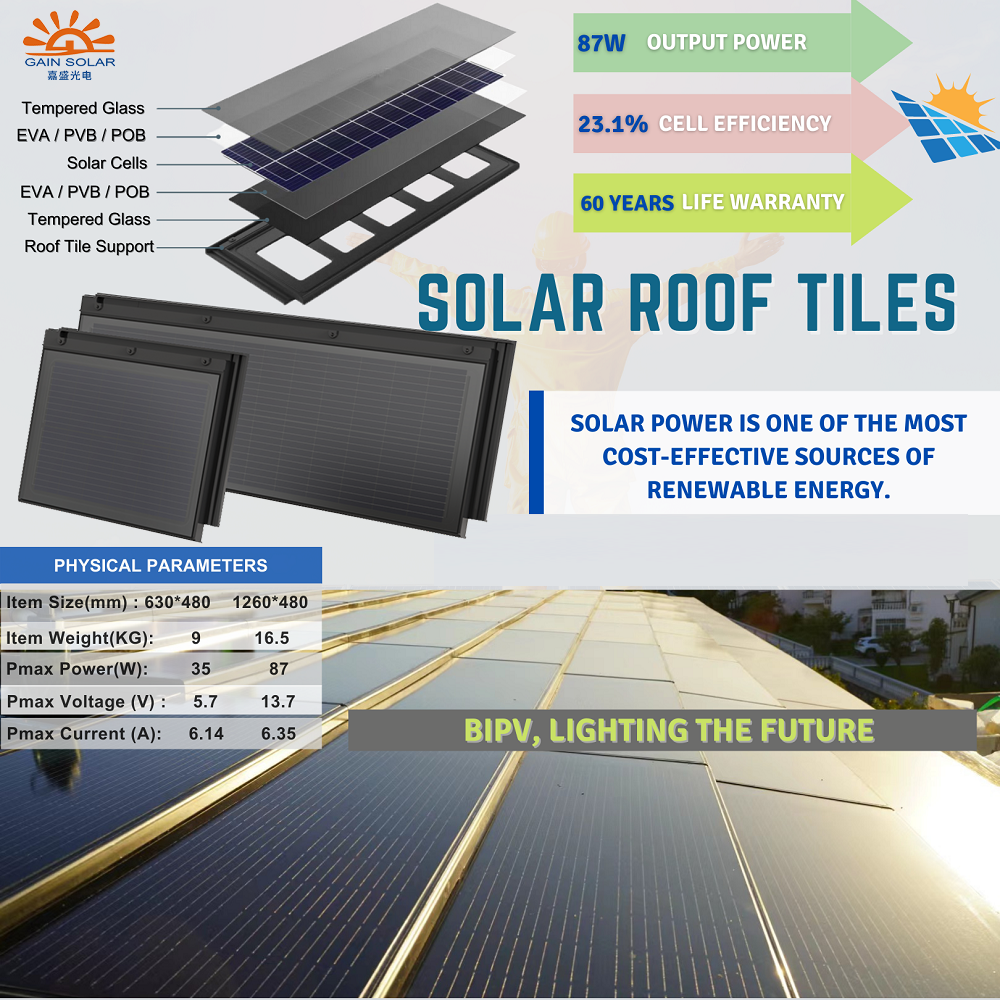
The design of solar shingles allows them to be seamlessly integrated into the building, making them a versatile and flexible option for generating clean energy. There are several ways that solar shingles can be integrated into the building, including:
Roof installation: Solar shingles can be installed directly onto the roof of the building, using a special mounting system that secures the shingles in place. This allows the shingles to blend in with the existing roof design, creating a sleek and seamless look.
Façade installation: Solar shingles can also be installed on the façade of the building, creating a unique and eye-catching visual effect. This installation method is often used in commercial buildings or other structures with large, vertical surfaces.
Canopy installation: Another option for integrating solar shingles into the building is to install them as a canopy or pergola. This allows the shingles to provide shade and shelter while also generating clean energy from the sun.
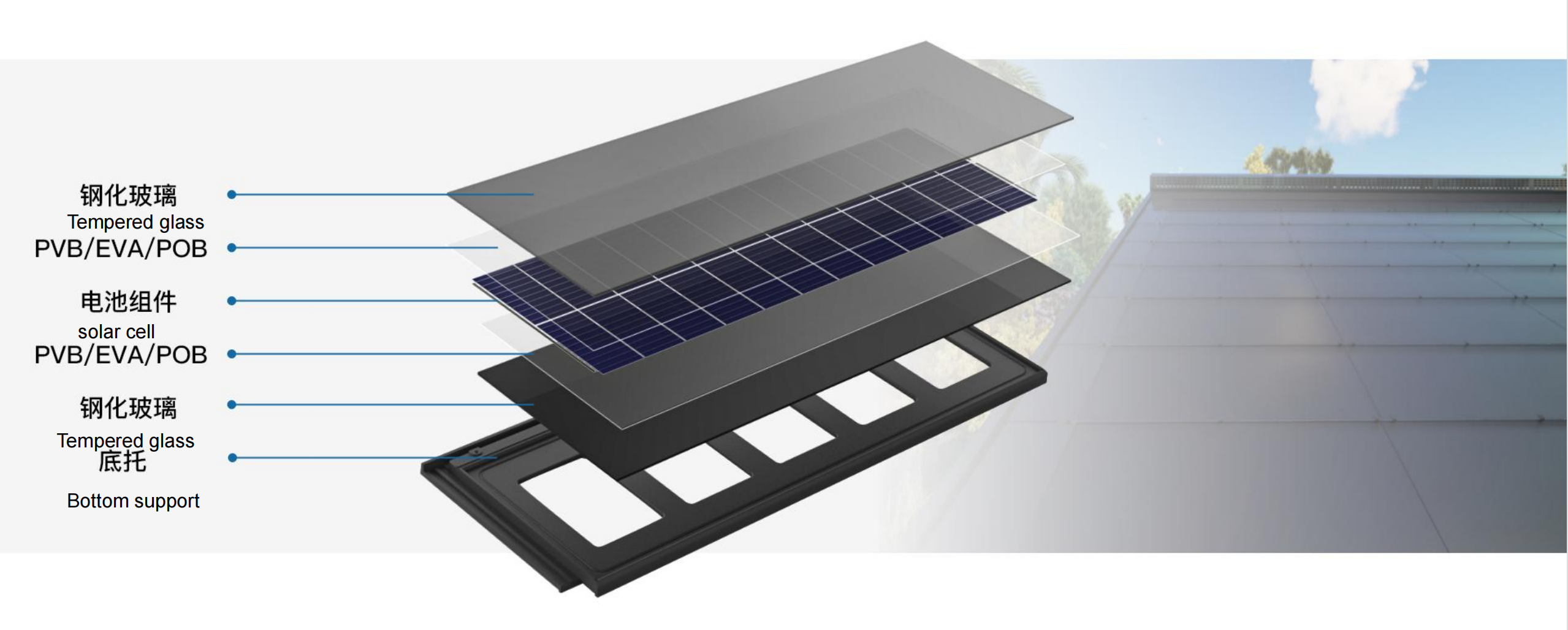
Solar shingles work by harnessing the power of the sun to generate electricity. They are made up of several layers, each of which plays an important role in converting sunlight into usable electricity.
The top layer of a solar shingle is usually a protective layer made of tempered glass or a durable polymer material. This layer is designed to protect the underlying solar cells from damage caused by weather, debris, and other environmental factors.
Beneath the protective layer is a layer of photovoltaic cells, which are responsible for converting sunlight into electricity. The cells are made of semiconductor materials, such as silicon, that absorb photons (particles of light) from the sun and use them to create an electric field.
When sunlight hits the photovoltaic cells in the solar shingles, the electric field created by the cells causes electrons to flow, generating a direct current (DC) of electricity. This DC electricity is then transmitted to an inverter, which converts it into alternating current (AC) electricity that can be used to power appliances and other devices in the home.
The inverter also monitors the electricity generated by the solar shingles and adjusts the output as needed to ensure that it is compatible with the electrical grid. Any excess electricity generated by the solar shingles can be stored in batteries or sold back to the utility company through a process called net metering.
Overall, the process of how solar shingles work is a complex but efficient one that allows homeowners to generate their own clean energy from the sun. By harnessing the power of solar shingles, homeowners can reduce their reliance on traditional power sources and enjoy a more sustainable and environmentally friendly way of powering their homes.
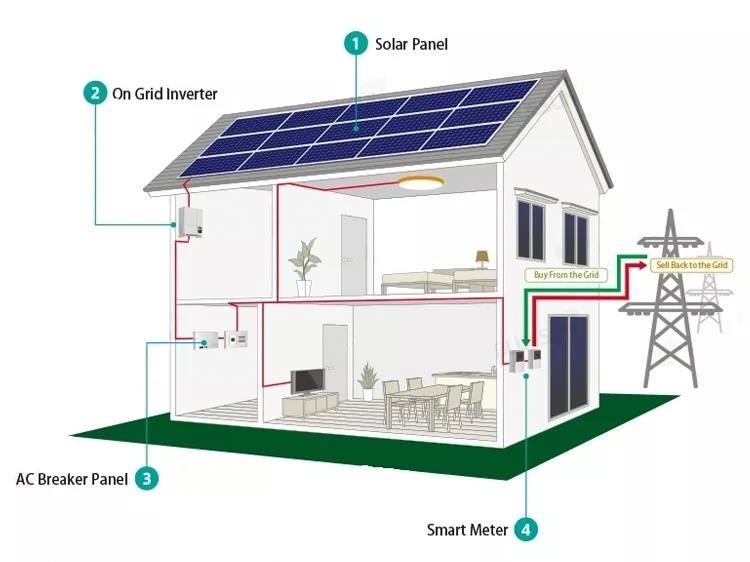
There are several advantages to using solar shingles as a source of renewable energy for homes and buildings. Some of the key advantages include:
Aesthetics: Solar shingles are designed to blend in seamlessly with the roof of a building, providing a more attractive and streamlined appearance compared to traditional solar panels. This can be particularly beneficial for homeowners and businesses looking to maintain the aesthetic appeal of their property while still generating clean energy.
Durability: Solar shingles are built to withstand harsh weather conditions, such as heavy rain, hail, and high winds. This durability ensures that they can continue to generate electricity even in the toughest of conditions, making them a reliable source of renewable energy.
Energy savings: By using solar shingles to generate electricity, homeowners and businesses can significantly reduce their energy bills. This can provide substantial cost savings over the long term, helping to offset the initial investment required to install the solar shingles.
Environmental benefits: Solar shingles generate clean energy from the sun, which helps to reduce greenhouse gas emissions and lower our dependence on non-renewable energy sources. By using solar shingles, individuals and businesses can make a positive impact on the environment and help to reduce their carbon footprint.
Increased home value: Installing solar shingles can increase the value of a home or building, as potential buyers may be willing to pay a premium for a property that includes a renewable energy source. This can be particularly advantageous for those looking to sell their property in the future.
While solar shingles offer several advantages, there are also some disadvantages to consider. Some of the main disadvantages of solar shingles include:
Higher upfront cost: Solar shingles are generally more expensive to install than traditional solar panels or conventional roofing materials, which can make them less accessible for some homeowners and businesses.
Limited availability: Solar shingles are not yet widely available, which means that they may be harder to find and purchase compared to other types of solar panels.
Lower efficiency: Solar shingles tend to be less efficient at converting sunlight into electricity compared to traditional solar panels, which means that they may generate less energy overall. This can be a particular concern in areas with limited sunlight or for buildings with limited roof space.
Technical complexity: Solar shingles are a relatively new technology, which means that they may require more technical expertise to install and maintain compared to traditional roofing materials. This can add to the overall cost and complexity of installing solar shingles.
Limited lifespan: While solar shingles are designed to be durable, they may have a shorter lifespan compared to traditional roofing materials. This means that they may need to be replaced more frequently, which can add to the overall cost of ownership.
The cost of solar shingles can vary depending on a number of factors, including the size of the installation, the complexity of the roof, and the type of solar shingle being used. In general, solar shingles tend to be more expensive than traditional solar panels on a per-watt basis, but may be more cost-effective when considering their aesthetic and durability benefits.
As of 2021, the cost of solar shingles can range from $5.20 to $12.00 per watt installed, with an average cost of around $9.50 per watt. This means that a typical 5 kW solar shingle system could cost anywhere from $26,000 to $60,000, depending on the specific installation.
It's important to note that while solar shingles may have a higher upfront cost compared to traditional solar panels, they may provide long-term savings on electricity bills, as well as potential increases in home value. Additionally, there may be state and federal incentives available to help offset the cost of installing solar shingles, such as tax credits and rebates.
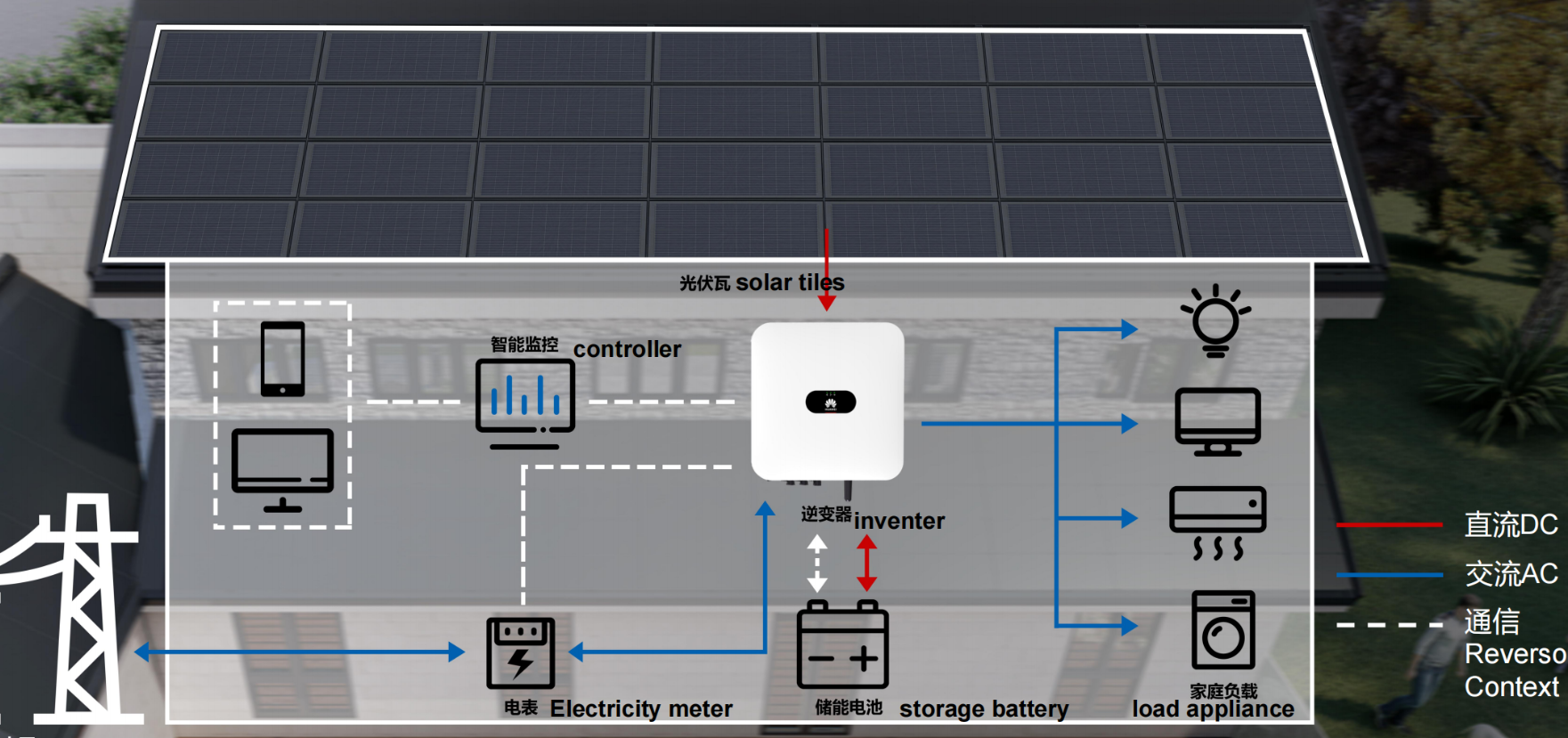
Solar shingle policies can vary widely depending on the country and region. Here is an overview of the policy landscape for solar shingles in several countries in 2022:
United States:
In the United States, there are various federal and state incentives available to promote the installation of solar shingles, such as tax credits and rebates. Additionally, some states have specific policies in place to encourage the use of solar shingles, such as California's "Solar Roofs" mandate, which requires all new residential buildings to include solar panels or solar roofing systems.
Canada:
In Canada, there are also various federal and provincial incentives available to promote the installation of solar shingles, such as the federal government's Residential Renewable Energy Tax Credit and the province of Ontario's Solar PV Incentive Program. Additionally, some municipalities may have specific policies in place to encourage the use of solar shingles, such as the City of Toronto's Green Roof Bylaw, which requires new buildings to include either a green roof or a renewable energy system.
Australia:
In Australia, there are several national and state-level incentives available to promote the installation of solar shingles, such as the federal government's Small-scale Renewable Energy Scheme and the state of Victoria's Solar Homes Program. Additionally, some local governments may have specific policies in place to encourage the use of solar shingles, such as the City of Sydney's Sustainable Sydney 2030 plan, which aims to increase the use of renewable energy sources.
United Kingdom:
In the United Kingdom, there are various national and local incentives available to promote the installation of solar shingles, such as the government's Smart Export Guarantee and the city of London's Solar Action Plan. However, the use of solar shingles is not yet as widespread in the UK compared to other countries, and there are currently no specific policies in place to encourage their use.
| Solar Shingles | Traditional Solar Panels | |
|---|---|---|
| Aesthetics | Designed to blend in seamlessly with the roof of a building, providing a more attractive and streamlined appearance. | Typically mounted on top of the roof, which can be less visually appealing. |
| Durability | Built to withstand harsh weather conditions, such as heavy rain, hail, and high winds. | May not be as durable and may be more susceptible to damage from extreme weather. |
| Ease of Installation | Can be installed directly onto the roof of a building, making them easier to install compared to traditional solar panels. | Typically require mounting brackets, which can add to the installation time and cost. |
| Flexibility | Can be used on roofs with complex shapes and angles, which can be difficult to accommodate with traditional solar panels. | May not be suitable for roofs with complex shapes and angles. |
| Improved Home Value | Can increase the value of a home or building, as potential buyers may be willing to pay a premium for a property that includes a renewable energy source. | Can also increase the value of a home or building. |
| Higher Upfront Cost | Generally more expensive to install than traditional solar panels, which can make them less accessible for some homeowners and businesses. | Can be more affordable than solar shingles. |
| Limited Availability | Not yet widely available, which means that they may be harder to find and purchase compared to other types of solar panels. | Widely available. |
| Lower Efficiency | Tend to be less efficient at converting sunlight into electricity compared to traditional solar panels, which means that they may generate less energy overall. | Tend to be more efficient at converting sunlight into electricity. |
| Technical Complexity | May require more technical expertise to install and maintain compared to traditional roofing materials. | Typically easier to install and maintain. |
| Limited Lifespan | While designed to be durable, they may have a shorter lifespan compared to traditional roofing materials. | Typically have a longer lifespan. |
Installing a solar shingle requires specialized knowledge and equipment, and it's recommended to have a professional installer handle the installation. Here's a general overview of the steps involved in the installation process:
Design the system: The first step is to determine the size of the system needed and design the layout of the solar shingles on the roof. This will involve calculating the energy needs of the home or building, as well as assessing the roof's orientation, angle, and shading.
Prepare the roof: Before installing the solar shingles, the roof must be prepared to ensure it is in good condition and can support the weight of the system. This may involve repairing or reinforcing the roof as needed, as well as cleaning and sealing the roof surface.
Install the mounting system: The mounting system is the framework that supports the solar shingles on the roof. This will involve attaching the mounting brackets to the roof rafters or trusses, and ensuring they are level and secure.
Install the solar shingles: Once the mounting system is in place, the solar shingles can be installed on top. This will involve interconnecting the shingles to create a complete electrical circuit, and ensuring that the shingles are properly sealed to prevent water leakage.
Connect the wiring: After the solar shingles are installed, the wiring can be connected to the electrical panel of the building. This will require an electrician to handle the wiring connections and ensure they are up to code.
Test and commission the system: Once the installation is complete, the system will need to be tested and commissioned to ensure it is functioning properly. This will involve conducting a range of tests to verify that the solar shingles are generating electricity and that the system is properly integrated with the building's electrical system.
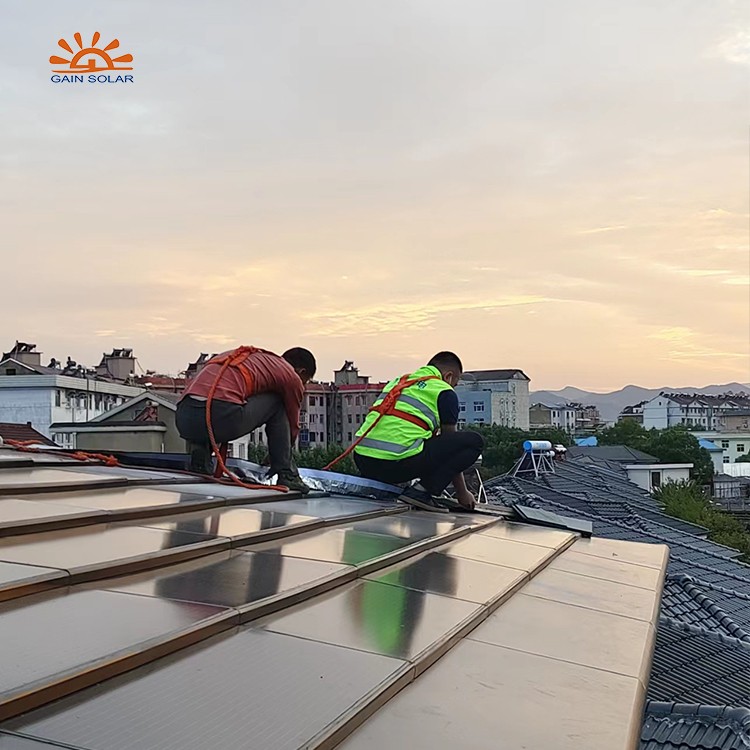
Solar shingles are designed to provide high-quality and reliable performance in even the harshest weather conditions. One of the most important features of solar shingles is their waterproof properties, which are essential for protecting the underlying roof and preventing water damage.
Most solar shingles are made of a durable and weather-resistant material, such as tempered glass or polymers. This material is designed to withstand rain, hail, and other environmental factors without cracking, chipping, or breaking. Additionally, the shingles are installed with a special flashing system that helps to prevent water from seeping through the roof and causing damage to the building.
In order to ensure that solar shingles provide a high-quality and reliable source of energy, they are subjected to rigorous testing and quality control measures. GAINSOLAR conduct extensive tests on the shingles to ensure that they meet strict performance standards for efficiency, durability, and weather resistance. These tests include exposure to extreme temperatures, wind, and water, as well as testing for electrical performance and safety.
Overall, the waterproof properties and high quality of solar shingles make them a practical and reliable option for generating clean energy while also protecting the underlying roof from water damage. By choosing solar shingles, homeowners and businesses can enjoy the benefits of sustainable energy while also maintaining the structural integrity and longevity of their roofs.
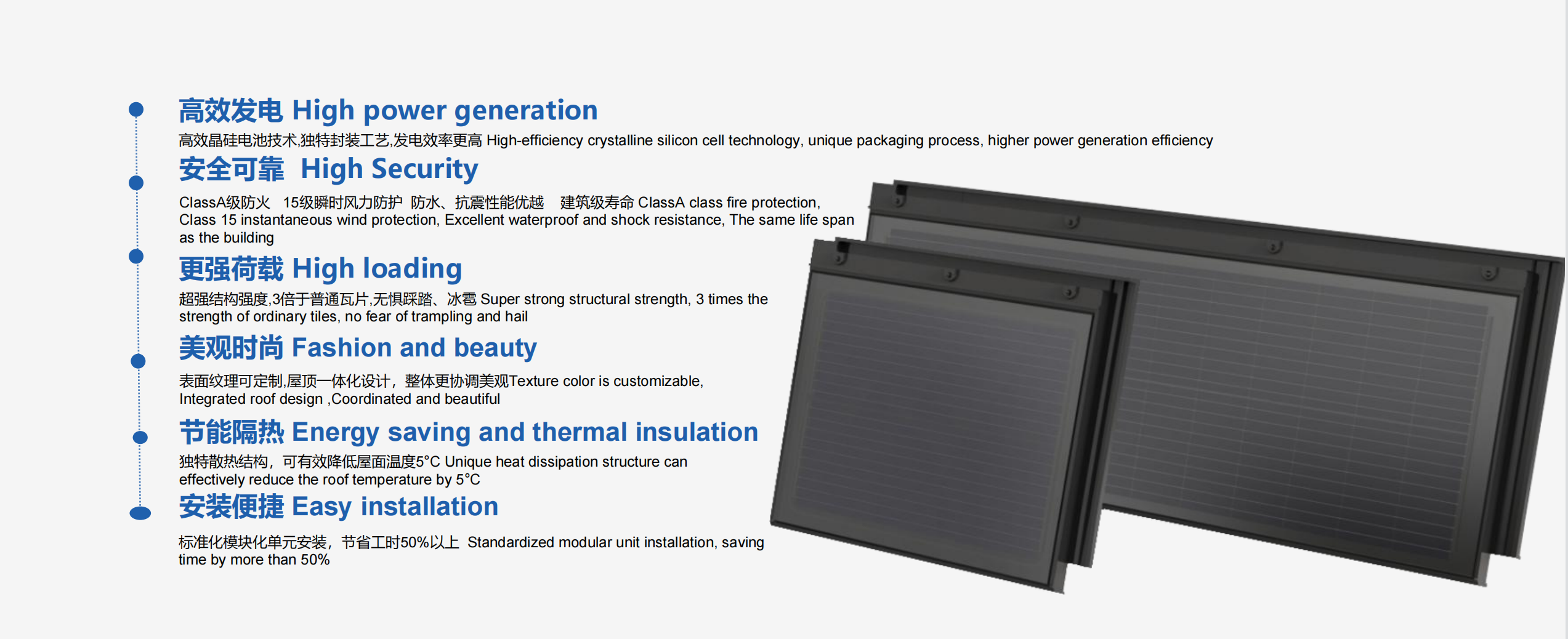
GAIN Solar is warrantied for diverse weather conditions such as snow, rain, and wind, and the system is designed to require little to no maintenance. Seasonal rains should help keep the solar shingles clean of dirt and debris, but if not, homeowners can either gently rinse their shingles (only when they’re cool).
FAQ
How long does a solar panel last?
Most solar panels have a guaranteed lifespan of 25 years-30years.
How much maintenance do I have to do on my solar panel?
Solar panels require little maintenance. Solar panels last at least 25 years, while the inverter lasts 10-12 years. This inverter will therefore have to be replaced halfway through its use. It is advisable to clean the solar panels once in a while, so that optimal solar energy can be generated.
Is solar energy easy to combine with other forms of energy?
If you don't produce enough solar energy to meet your own energy consumption, you can use fossil fuels to make up for the rest (unless, of course, you buy green energy from your energy supplier). The costs for this energy are on your energy bill.
My installer had calculated much more yield for my solar panels. Is there anything I can do about this?
The yield depends on several factors, including the weather. If your installer has charged you more revenue than is realized in practice, we advise you to contact your installer about this.
solar shingle
If you're considering buying a solar shingle for your home or building, here are some key factors to consider:
Energy needs: The first step in buying a solar shingle is to assess your energy needs. Determine how much electricity you use on a daily or monthly basis, and what appliances or devices consume the most energy. This will help you determine the size of the solar shingle system you need.
Roof suitability: Solar shingles are designed to be integrated into the roof of a building, so it's important to assess the suitability of your roof for installation. Consider the size, pitch, orientation, and shading of your roof, as well as its condition and age.
Quality and performance: Look for high-quality solar shingles that are designed to withstand harsh weather conditions and last for many years. Consider the efficiency rating of the shingles, which indicates how much electricity they can generate per unit of sunlight.
Cost: Solar shingles can be more expensive than traditional solar panels, so it's important to consider the cost of the system and whether it fits within your budget. Look for incentives and rebates that may be available to help offset the cost of installation.
Installation: Installing a solar shingle requires specialized knowledge and equipment, so it's important to work with a qualified installer who can handle the installation process safely and efficiently.
Warranty and maintenance: Look for solar shingles that come with a warranty and maintenance plan, which can help protect your investment and ensure that the system performs optimally over time.
By considering these factors, you can make an informed decision about buying a solar shingle that meets your energy needs and fits within your budget.
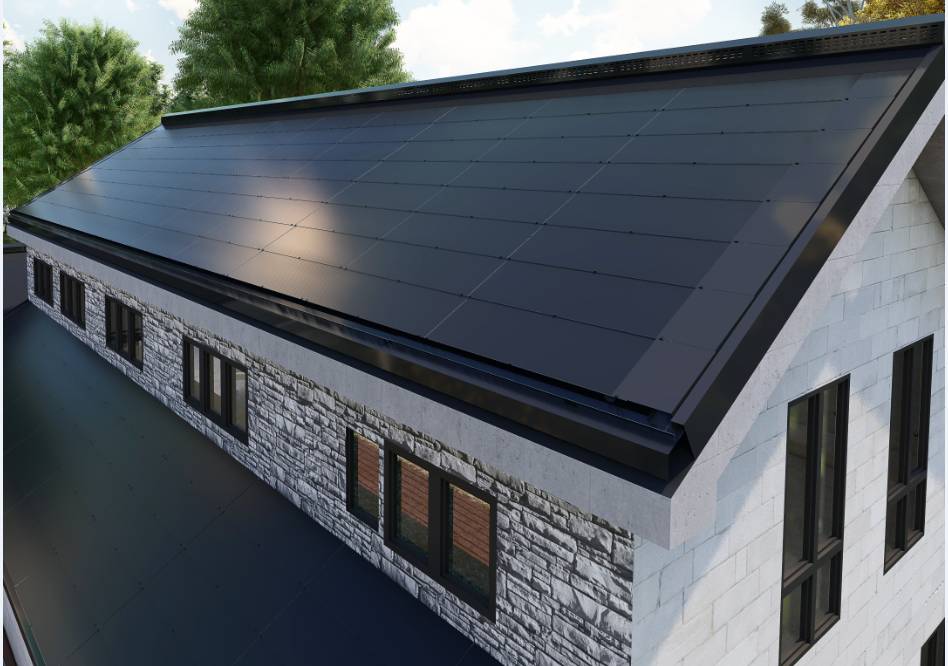
At GAIN SOLAR, we take pride in offering customised solar shingle solutions that meet the unique needs of our clients. Our professional factory is equipped with state-of-the-art equipment and staffed by a team of experienced technicians, ensuring that every solar shingle we produce is of the highest quality. With our customised products and professional factory, we're able to offer unparalleled advantages in terms of efficiency, durability, and aesthetics. Choose GAIN SOLAR for a solar shingle system that's tailor-made for your specific needs
Picture Library
Related Information
Contact Us